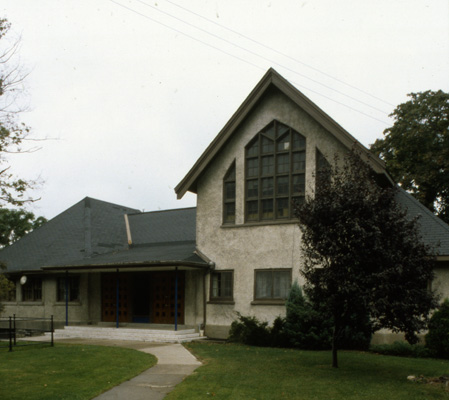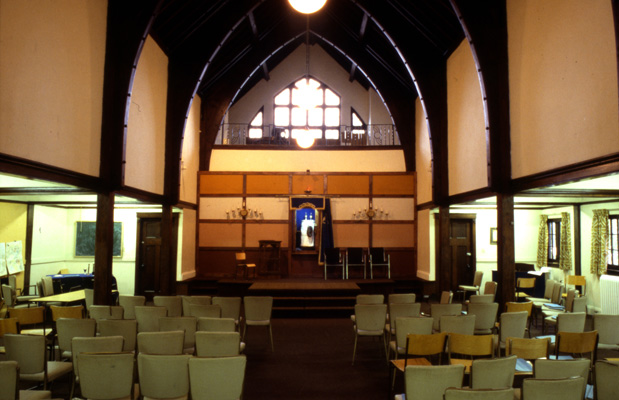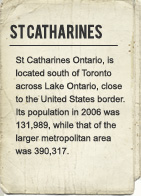Temple Tikvah
Temple Tikvah was established in 1972 as a Reform alternative to B’nai Israel, which at the time was a Conservative synagogue with an Orthodox rabbi. During the early years, about 12 families would meet in different homes. They were mostly unaffiliated members of the community; many were professors at Brock University in search of a congregation that suited their needs. The first meeting was held on 30 January 1972. On 26 March, the congregation selected the name Temple Tikvah (which meant Temple of Hope) and nominated Barry Berman, a local dentist, as the first chair of the board. They began to rent a converted chapel in the Mountainview United Church. The cross was discretely covered up during services with a cloth. At the time, they were the only liberal congregation in the area. As such, they were affiliated with Temple Anshe Shalom in Hamilton.
The congregation moved to the downtown location of St. Georges Anglican Church in 1974. By this time the congregation had grown to 25-30 families. The Hebrew classes were taught by congregants, but later on they sent their children to Temple Beth Am in Buffalo. There were about 35 children enrolled in the program at that time. Due to the problems caused by double daylight savings, the congregation decided to educate their children at their own temple in order to eliminate the difficult and dark commute.
The congregation at this time was extremely vibrant and active. It relied on part-time rabbis. The first one was Rabbi Kogan and their cantor was Ruth Slater from Hamilton. A number of the rabbis that they relied on later on were students who commuted from Hebrew Union College in Cincinnati. They had an ark, which was constructed by Bob Slater and Peter Hubbard. A new Torah was dedicated on 16 November 1973 at a special service. It was donated by the family of Morris Berkowitz, a local professor who suffered from an untimely death due to cancer. It was originally made in Czechoslovakia during the 19th century and taken by the Nazis during the war. The members designed a special Torah cover to protect and decorate it. And finally, the congregation produced its own High Holiday prayer book.
During this period, the congregation also created their own Passover Haggadah. A newsletter was also developed and circulated to members called “Temple Tikvah Diary.” Although their numbers were relatively small, they always had a very high turnout for most of their events. The congregation engaged in a wide array of activities including a youth group, choir, brunch meetings, sukkah building, Chanukah parties, Oneg Shabbats, bazaar fundraisers and other events. The youth group would help lead services and many of the kids attended the Kutz Camp in New Jersey, where they would meet youth from across North America. In 1985, the Temple won a Wintario Grant to support an event called Kallah. It ran for two years, from 1984 until 1986, and involved presentations and workshops aimed at bringing together different Jewish communities from the area. The Temple also engaged in inter-faith activities during this period, in order to establish stronger ties with residents from other religious groups.
The Temple has been known for its pioneering spirit and path breaking decision-making. In 1977, the Temple was the first synagogue in Canada to hire a female rabbi, Vicky Hollander. She was a 27 year old student from Cincinnati. She would commute to St. Catharines twice a month in time for Friday night services. In 1992, the Temple hired the second female rabbi in Canada, Ellen Wierzba.
Slideshow: Temple Tikvah
This slideshow provides a visual history of Temple Tikvah, showcasing some of the congregation’s leaders as well as the innovative programs they have held over the years.





















